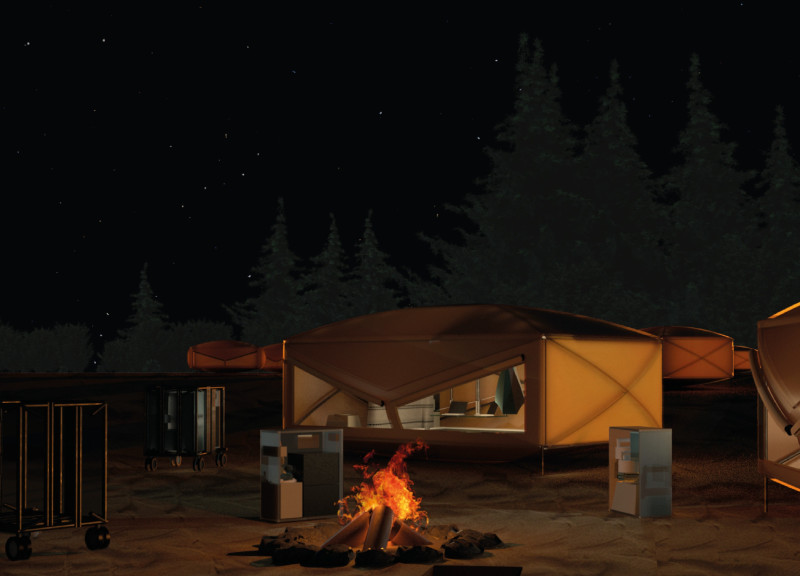5 key facts about this project
The Landing is a portable housing solution designed for the varied environments of Vancouver, where natural disasters pose real challenges. Intended for individuals and families, this compact unit can accommodate up to four people. The main idea combines the functions of a home with the ease of a tent, promoting independence and adaptability in living arrangements.
Design Concept
The design features essential spaces such as a living room, washroom, and bedroom. Uniquely, it omits a traditional kitchen, which encourages cooking outdoors for improved safety. This choice highlights the importance of fire prevention in a compact space. The inclusion of a sewage and rainwater collection system allows future occupants to live independently from public utilities, supporting a sustainable lifestyle even in areas that face natural challenges.
Structure and Functionality
The Landing allows for quick assembly, taking about 15 minutes to set up. The structure resembles a tent, starting with the expansion of a main frame and the placement of trampolines. After this, the entire assembly gets covered with tent fabric and a rain cover, creating a protective enclosure. This straightforward setup is particularly beneficial in scenarios needing rapid habitation, such as during emergencies.
Mobility and Storage
The design emphasizes mobility, ensuring The Landing can be towed by a bike or a vehicle, which suits a flexible lifestyle. When not in use, all components can be neatly packed into a specialized Box that contains the tent fabrics and essential systems. This practical storage method highlights efficient use of space, making it easy for users to transport their home to different locations, whether urban or remote.
Technical Details
Materials include tent fabrics and components for the rain cover, both of which contribute to the durability and practicality of the design. The unit is equipped with necessary electronic appliances like lights, a water boiler, and a water filter, all placed within the Box. This thoughtful arrangement provides a fully functional living space that meets the occupants' basic needs in a compact format.
In the end, the design skillfully combines practicality and mobility, offering a sensible solution for modern living challenges.



















































